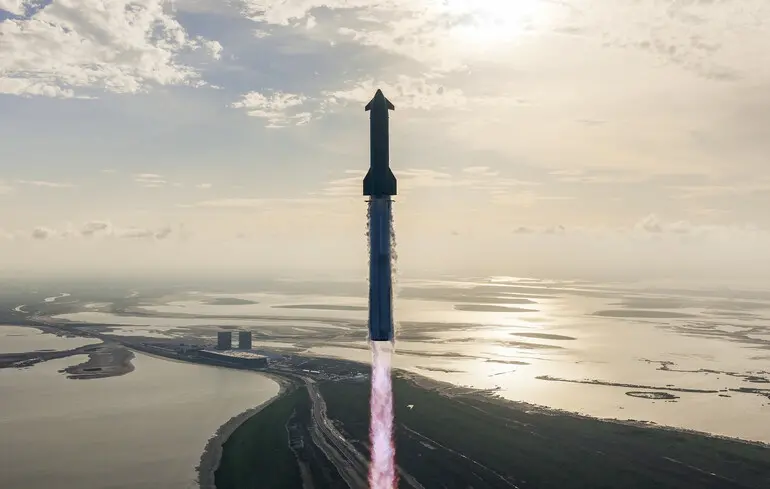SpaceX’s Success: The Tenth Starship Heavy-Lift Launch Marks a New Era in Space Exploration and Commercial Flights

After a series of failures and a period of intense anticipation, SpaceX achieved a long-awaited milestone by successfully completing its tenth test flight of the massive Rocket — Starship.
This breakthrough represents a significant step forward in the development of the private space industry, proving Elon Musk’s company’s ability to overcome technical challenges and advance toward its ambitious plans for colonizing other planets.
According to the Financial Times, the launch took place from the Starbase launch site in Texas, where the 122-meter-tall rocket took off smoothly, avoiding the setbacks experienced in previous attempts.
Unlike earlier failed launches characterized by explosions or loss of control mid-flight, this latest mission demonstrated stable operation and technical soundness.
After the first stage separation, the spacecraft successfully deployed several mock satellites of the Starlink network into orbit and executed a controlled descent, landing safely in the Indian Ocean.
The reusable Super Heavy booster also performed as planned, returning and landing in the Gulf of Mexico after its tests.
This confirms the readiness of the system for repeated use, which is crucial for reducing costs and accelerating the development of space projects.
Starship, the largest rocket in the world capable of carrying up to 250 tons of cargo, is central to Musk’s plans for lunar and Martian exploration, as well as expanding the Starlink satellite constellation, now comprising over 8,000 satellites providing global internet coverage.
Past launch attempts were marred by serious accidents, including explosions during launch and loss of control during flight, prompting temporary bans from the U.S.
Federal Aviation Administration.
Nevertheless, SpaceX’s persistence and innovative approach have led to significant progress.
The company is now planning to send five Starships to Mars, a step toward its long-term goal of human colonization of the Red Planet.
Although recent delays due to oxygen leaks and weather conditions have challenged this schedule, the successful latest launch underscores the high level of technical expertise within the company.
This enables optimistic outlooks toward broader ambitions of reaching Mars and beyond, with real challenges still ahead.
The ambitions of Musk’s team set new standards in space research and aim to make humanity a multi-planetary species.
However, numerous technical barriers remain, and competitors like Blue Origin, Boeing, and Lockheed Martin lag behind in launch frequency and technological achievements.
Recent U.S.
presidential executive order easing regulations for commercial space operators also paves the way for rapid industry growth.
Despite these advances, current technologies still are not fully prepared for large-scale deep-space missions.
An analytical article discusses these technical hurdles and future prospects for overcoming them.
Will humanity reach Mars in the near future? While the prospects remain uncertain, SpaceX’s ongoing efforts and innovations are shaping a new epoch in space exploration, redefining the limits of what seems possible in this realm.

